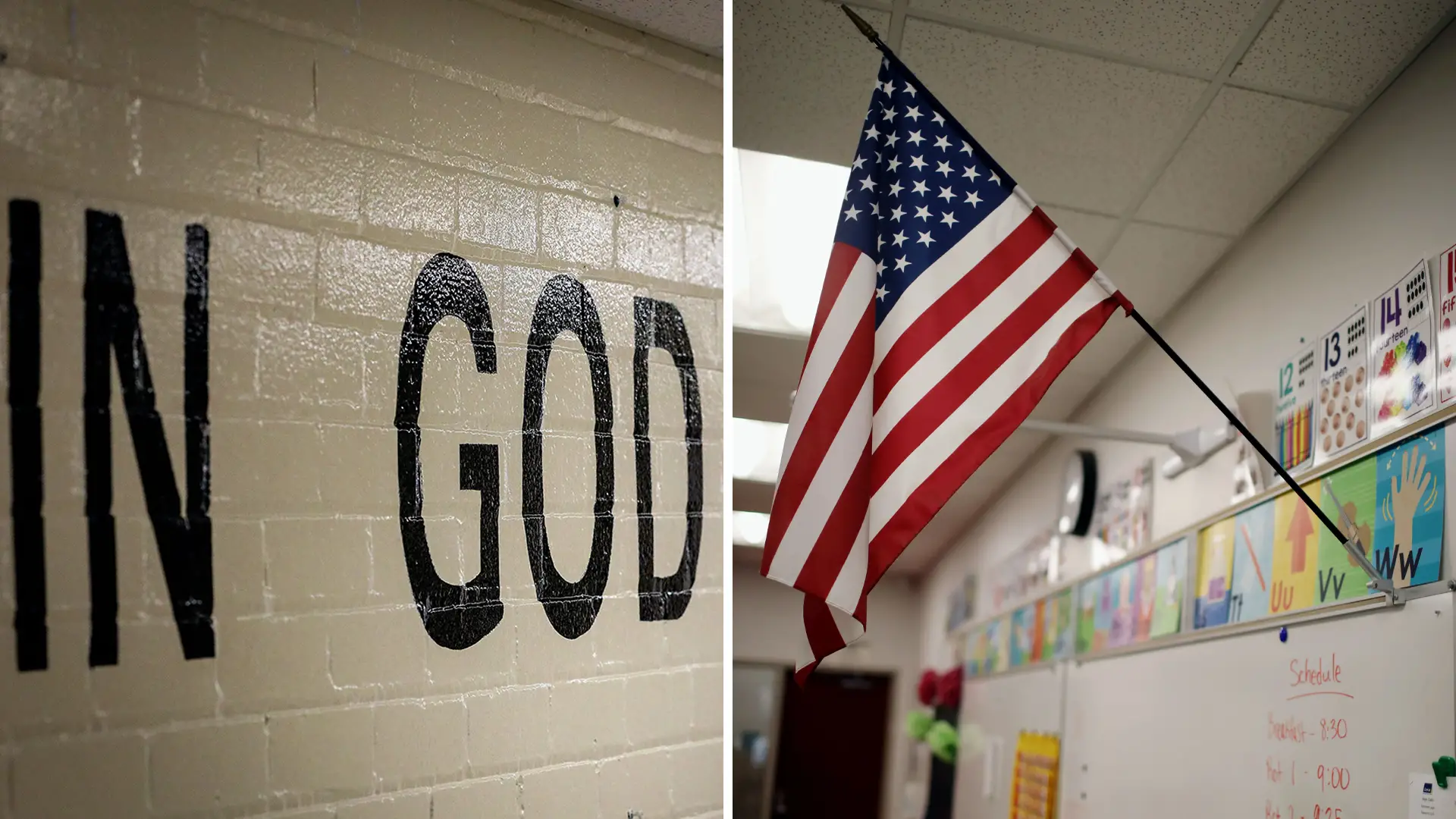
The intertwining of politics, education, and religion has always been a subject of profound discussion in the United States. In a bold move that has become emblematic of these intersections, all public schools in red states have now been mandated to display the national motto, “In God We Trust.” This decision, steeped in layers of history, politics, and societal values, has opened up new avenues of debate and discourse.
To grasp the significance of this mandate, it’s crucial first to appreciate the historical context of the motto. Introduced during the turmoil of the Civil War, “In God We Trust” was a beacon of hope, unity, and resilience. Coinage first bore these words, symbolizing a nation’s trust in a higher power amidst unprecedented internal conflict. By 1956, amidst the ideological struggles of the Cold War, it was adopted as the national motto, emphasizing a distinction from the perceived atheism of the U.S.’s adversaries.
The term “red states” generally refers to those states with a conservative or Republican-leaning political stance. The mandate to display the national motto in public schools within these states can be seen from several perspectives:
For many supporters, this mandate is not solely about religion but a reaffirmation of America’s foundational ethos. By ensuring the motto’s presence in schools, they believe the next generation will be continually reminded of these foundational values.
The modern world, with its rapid technological advancements, often feels like it’s moving away from traditional spiritual anchors. Some see this mandate as a gentle, everyday reminder of America’s spiritual heritage. Critics opine that the move is less about spirituality and more a political statement. They see it as a way to underscore and propagate a particular cultural and political narrative.
The mandate’s announcement immediately brought the First Amendment into focus. The U.S. Constitution emphasizes that “Congress shall make no law respecting an establishment of religion.” How does this mandate align or conflict with that principle? Those favoring the decision argue that the motto doesn’t endorse a specific religion. It’s more a cultural affirmation than a religious decree.
Opponents believe that, in an increasingly diverse society, public institutions, especially schools, should remain neutral. The motto might inadvertently alienate or marginalize students from different religious or secular backgrounds. This mandate isn’t just about four words on a wall.
While the motto might resonate with many, there’s a risk that it could also accentuate differences among students. It begs the question: will it unite students under a shared banner or amplify divisions?
With public schools already juggling numerous challenges — from curriculum shifts to technological integration — some educators feel that such mandates divert focus from more pressing concerns. On the brighter side, this mandate can serve as a catalyst for discussions about history, the role of religion in society, and the importance of understanding and respect in a diverse community.
As the dust settles on the announcement, schools across red states will begin to display “In God We Trust,” each in their own unique way. This act, simple yet symbolically charged, will serve as a daily reminder of the intricate balance between faith, politics, and education in America.
While opinions on the mandate will remain varied, it offers a broader lesson: the importance of dialogue and understanding in a nation as diverse as the U.S. How this chapter in American education history will be judged is yet to be seen. What’s undeniable, however, is that it will be remembered and discussed for years to come.